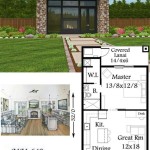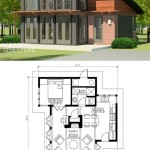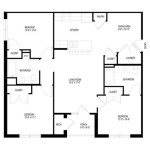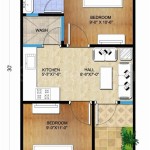Lay Out House Floor Plans
Creating a well-designed house floor plan is crucial for maximizing functionality, comfort, and aesthetics within your living space. Here's a comprehensive guide to help you lay out house floor plans that meet your specific needs and aspirations.
Establish Your Requirements
Begin by determining the number of bedrooms, bathrooms, and other rooms you need. Consider your current and future family size, lifestyle, and daily routines. List down your essential requirements and any additional features you desire, such as a home office, guest room, or entertainment area.
Choose a Floor Plan Type
Select the floor plan type that best suits your needs. Common options include:
- One-story floor plans: Suitable for smaller families or those who prefer single-level living.
- Two-story floor plans: Offer more space and privacy, with bedrooms located upstairs.
- Split-level floor plans: Divide the house vertically, creating more interesting and dynamic spaces.
Plan for Natural Light
Maximize natural light by positioning windows and doors strategically. Place windows on south-facing walls to harness daylight during the day. Consider skylights or large windows in high-traffic areas to create a bright and airy atmosphere.
Consider Traffic Flow
Ensure seamless flow throughout the house by creating clear paths of movement. Avoid unnecessary obstacles or bottlenecks. Divide the floor plan into distinct zones, such as public areas, private areas, and service areas, to minimize interruptions.
Optimize Space Utilization
Maximize space utilization by carefully arranging furniture and other elements. Use built-in storage options, such as closets, shelves, and drawers, to keep clutter at bay. Consider multi-purpose spaces that serve multiple functions, such as a guest room that doubles as a home office.
Prioritize Privacy
Designate private spaces, such as bedrooms and bathrooms, away from high-traffic areas. Ensure that these rooms have adequate privacy and separation from communal spaces.
Consider Outdoor Spaces
Don't neglect outdoor spaces when planning your floor plan. Integrate patios, decks, or balconies into the design to create seamless transitions between indoor and outdoor living. Consider the orientation and privacy of these spaces.
Consult with a Professional
If you need guidance or expertise, consider consulting with an architect or floor plan designer. They can help you translate your ideas into a functional and aesthetically pleasing floor plan that meets all your requirements.
Conclusion
Laying out house floor plans involves careful planning and consideration of various factors. By following these guidelines, you can create a well-designed house plan that caters to your needs, maximizes space utilization, and enhances the overall functionality and comfort of your home.

Create Professional 2d And 3d Floor Plans

Design Your Own House Floor Plans Roomsketcher

Small House Designs Shd 2024001 Pinoy Eplans

Design Your Own House Floor Plans Roomsketcher

Heritage House Plan

How To Draw A Floor Plan Live Home 3d

William House Plan Sater Design Collection

22 House Design With Floor Plans You Will Love Simple 9a3

Importance Of House Floor Plans In Architectural Design

How To Read Floor Plans 8 Key Elements A Plan Foyr








